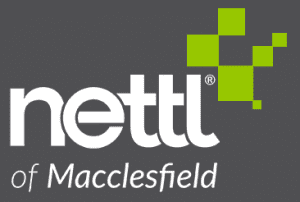In this article, we will identify how your brand can grow and evolve with your business, why a company might rebrand their business and things to consider when creating new business branding. We’ll look at global versus local branding and share the next steps you need to take to create a strong brand for your business.
What is branding?
Branding involves developing and implementing a number of identifiable features so your consumers can associate themselves with your business. Branding increases the recognisability of products and services amongst your competitors, giving you that edge within the market.
It helps to define how customers recognise your brand. Typically comprising of a name, tagline, logo or symbol, design and brand voice. It also refers to the underlying values of the business and overall experience a customer is exposed to when interacting with a business.
Your brand is the essence of your business; why you exist, who you are and how you help your clients.
Creating a Strong Brand
Many entrepreneurs are starting their own businesses right now and are wondering where to begin when it comes to branding. There are a number of ways to increase the strength of your brand;
Achieve Consistency with Brand Guidelines
Create a strong brand through familiarity and recognition. These are founding pillars in building trust in your brand.
A collection of inconsistent colours, disproportionate or varying logos and a flurry of fonts will fail to build that link with your audience.
Streamline your branding by teaming up with your local design agency, like Nettl, to create simple brand guidelines that are visual, comprehensive and can be shared across your whole team. Having a guide to refer back to will reduce the likelihood of your old logo being used on new marketing, or seeing an array of different fonts all over your collateral.
Make your Message Crystal Clear
Keep your message clear. Combine your purpose as a business and the values you hold most important to define your brand message.
Every aspect of your brand (your logo, your imagery and even your tone of voice) should all be tied together with a clear message of what you do, and more importantly, why you do it.
If you’re a small business owner and are not sure where to begin, ask your family and friends, clients, suppliers and local experts to have a brainstorm with you. Use external resources to scaffold your brand planning. Something as simple as a one page business plan can be an effective way to identify your message. Tie that in with your brand guidelines and you will achieve clarity of purpose.
Authenticity and Trust are Key
Your brand is more than a set of colours or a list of values.
When established correctly, your brand will inform the decisions you make about your business. Which partnerships to create and which to avoid. Which marketing campaigns are best suited, how you answer the phone and the experience you offer customers.
Create a strong brand that encompasses the core goal of your business and remain true to it. This will build authenticity and trust amongst your clients and suppliers.
Is your brand luxurious or affordable? Does it value speed of service or craftsmanship and experience? Do clients come to you for a bespoke offering or a dependable staple? These questions and many more will enable you to create a brand that your clients and stakeholders can really trust.
Continuity
Keep your brand consistent across all platforms and mediums.
Maintain clarity of purpose through the message you share and the actions you take as a business.
Build authenticity and trust by remaining true to your brand.
Finally, an important part of every strong brand is continuity. This is not to say your brand continues to remain the same until the end of time. Rather, with every evolution of your business (and the world around you!) you grow your brand whilst keeping the root of your purpose and values true. There are many reasons you will update and amend your branding as your business grows, shrinks and changes – that’s perfectly normal. It’s about identifying the right time for a brand refresh (or sometimes a whole rebrand) and the best ways to change.
What might cause you to change your branding?
Perhaps you’ve pivoted, or you have new product offering, a new target market, mergers or changes in technology.
Your business will grow and contract and evolve often, especially in times of change. This past year has given rise to multiple reasons a business might need to pivot. Reflect upon your brand each time these changes happen, perhaps plan a quarterly review of your brand as many of these evolutions will occur organically. Ask yourself, “Is my message still relevant? Does the way we look and behave reflect the way we now operate? Do we need to change to appeal to an audience or reflect a changing offering?”
Appeal to a Market
Trying to break into a new geography or demographic? Think how this might affect:
- Language
- Tone of voice
- Market position
Are you trying to crack a new market? Remember the many nuances and preferences that come with a new audience.
Your brand may need to grow and change in order to appeal to your new or extended target market.
Brands might need to adjust names or taglines according to the language of the market they are trying to establish themselves in. Your tone of voice may need to change if you’re targeting a younger or older or different demographic. Even where you position yourself in the market may be different. Ensure your brand is relevant and authentic to your local market, whilst remaining consistent and clear on a global scale.
There are many household staples that change their brand according to the market language.
Trends over Time
As technology grows and trends change, so too must our branding.
- The means of communication we choose are updated and improved, nullified or antiquated. Your branding needs to be fluid to appeal to each – print / large format / signage / web / social media / TV / radio.
- As well as this, how do creative trends impact your branding? Are curves all the rage right now? Or is it a sleek sans-serif mood you’re going for?
If you work with Nettl of Macclesfield to create brand guidelines, you’ll see how your logo and brand identity might change depending on where you’re presenting it. We’ll have a certain logo on your website homepage that might be slightly amended for your favicon. If we design and print vouchers for your business on a dark background, we might use the light version of your logo, whereas if we create a PowerPoint presentation for you on a light background, we might use the dark version of your logo.
The medium you’re presenting on will influence the way your brand appears. As well as this, trends, design preferences and technological advancements will cause you to rethink and grow your brand.
Do you think Coca-Cola has kept the same branding over their 130+ years trading? Certainly not, it has changed a lot, but has maintained continuity throughout.
Reputation
Don’t forget that your brand evokes a feeling and carries with it a reputation. If you’ve merged two businesses, come under new management or even had a reputational faux-pas that you need to disassociate your business with, it’s probably time to evolve that brand.
Learn more about the changing nature of brands in order to cultivate, change or avoid a reputation.
Growing your brand
What’s the difference between a local and global brand?
Global branding is when a business maintains the same branding and marketing across all countries they operate in. Local branding is when a business tailors their branding; voice, message, values, and marketing to a specific location or localised target market.
How does a local brand differ from a global brand?
Global:
- Easily identifiable
- Brand loyalty & trust
- Recognition & convenience in choosing
- Economies of scale
- Share of voice
- Shared assets & shared insights
- Support, training, systems
- Paved path
Local:
- Personalised
- Nuanced
- Tailor focus
- Adapt & change at short notice
- Launch faster
A global brand with a local presence
I want to maintain my relationships and local foothold within my community
One of the most valuable things a business can do is know and grow their customers’ businesses (solve their problems and improve their lives). I often find the best client relationships I’ve had were with businesses in my local area. I know them, their business, what’s going on and ways to get them more customers. So how can you access wider audiences without losing your valuable local stance?
Brand partnerships to support evolution
Form strategic partnerships with suppliers who can guide you to grow your local foothold, whilst keeping an eye on markets that are further afield. Nettl of Macclesfield is part of a global network, but maintains close relationships in our local area.
You might also form a partnership with a business who already has a basis in an area. Perhaps they have a global brand themselves or pre-existing brand recognition in the area you want to break into – form alliances through joint ventures. One example of this would be creative agencies who form partnerships with Nettl across the world. Nettl has already built a national reputation in many of these areas, so small business owners can use that brand to bolster their own.
Brand audit or brand guidelines
Request a brand audit or enquire about brand guidelines to support you in creating a strong brand that marries consistency with clarity, authenticity and continuity. Below is an example from a Nettl client’s brand guidelines. They use this to ensure their whole team and external stakeholders understand how to best present their brand.



